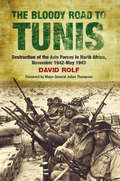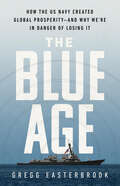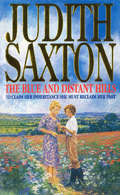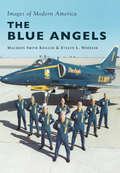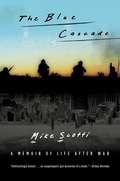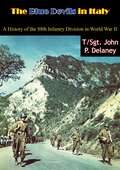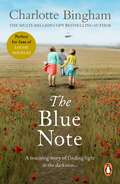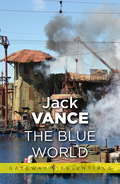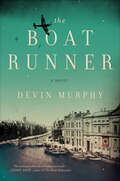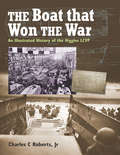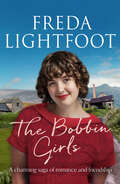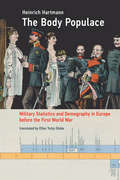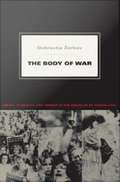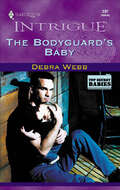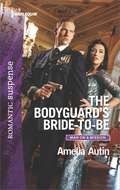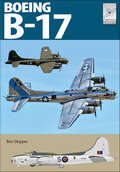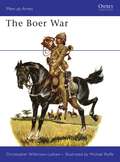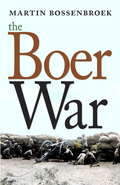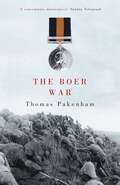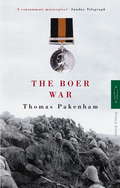- Table View
- List View
The Bloody Road to Tunis: Destruction of the Axis Forces in North Africa, November 1942–May 1943
by David RolfAs the Afrika Korps withdrew after a bruising defeat at El Alamein, it became apparent that Axis forces would not be able to maintain their hold over Libya. Rommel pulled his troops back to Tunisia, digging in along the Mareth Line, and turned westwards t
The Blue Age: How the US Navy Created Global Prosperity--And Why We're in Danger of Losing It
by Gregg EasterbrookThe US Navy brought half a century of peace and free trade to the world&’s waterways. But climate change and rising nationalism threaten to end this blue age. For decades, the Navy has stood sentinel over crucial waterways, ensuring safe passage of goods from nearly all nations. The result is the longest phase of peace on the waters since the Phoenicians, with rising living standards, more (total) jobs, and the dramatic decline of poverty in Asia. But these prosperous times could be at an end. Today China is building warships at an extraordinary pace. India, Japan, Vietnam, and Europe are responding with more fighting ships. What will result from China&’s rising naval might, particularly in the South China Sea? As ocean resources are shaped by climate change and new discoveries, will the world share them or fight over them? What will happen if America turns against free trade? Without American investment, the world could see a rise of supply shortages and seagoing conflict that would dwarf the impact of the container ship stuck in the Suez Canal. Surveying naval history, economics, environmental threats, and great-power politics, The Blue Age makes an urgent argument about our oceans&’ vital importance to the peace and prosperity of our global community.
The Blue And Distant Hills
by Judith SaxtonA young girl's search for her identity and for a love that can overcome her past.Questa Adamson is stranded in Italy for the duration of the Second World War. When she finally returns to England she is haunted by terrible memories. She finds that the safe childhood world she remembers has disappeared and that she is as alone in her home country as she has been in Italy.She also finds that she has inherited a tumbledown manor house in Shropshire and is determined to restore the estate to its former glory, despite rationing and post-war austerity. And when she meets her mysterious neighbor, Marcus, it seems as if she might, at last, begin to drop her guard and learn to love.But loving Marcus brings its own special difficulties and Questa soon finds herself faced with an extraordinary and painful choice.
The Blue Angels (Images of Modern America)
by Maureen Smith Keillor Evelyn L. WheelerEvery year, more than 11 million people attend air shows that feature the Blue Angels, who call Pensacola, Florida, their home. The Navy's Flight Demonstration Team, with its six gleaming blue-and-gold F/A-18 Hornets, never fails to thrill the crowds. Flying from heights of over 15,000 feet and dropping as low as 50 feet, the shows are nonstop, high-energy, heart-stopping excitement. The Blue Angels were established in 1946 by Adm. Chester W. Nimitz to "showcase the pride and professionalism of the United States Navy and Marine Corps by inspiring a culture of excellence and service to country through flight demonstrations and community outreach." The Blue Angels pilots and flight crew visit 50,000 people a year in schools, hospitals, and other community events, in addition to performing for those who attend their air shows.
The Blue Cascade: A Memoir of Life after War
by Mike ScottiSometimes the hardest battle is the one after the war. As one of the soldiers on the front line of Operation Iraqi Freedom, Lieutenant Scotti was taught that weakness is what gets you killed: no hesitation, focus your energies on your objective, and complete the mission. Upon returning from war, Scotti approached his new life the same way. He ignored the creeping depression and numbness he called "The Blue Cascade" and charged ahead toward his goal to get an MBA, secure a high-paying finance job, and retire young and rich. But he was being eaten away inside, and scenes of drunken emotion and raging violence were becoming more and more frequent. Years after returning from active combat, he eventually found himself contemplating suicide. Through a series of powerful events, Scotti was ultimately able to find a path to healing and begin his journey back to life, finally emerging with the following wisdom for fellow sufferers of post-traumatic stress: It's ok if you are not ok.
The Blue Devils in Italy: A History of the 88th Infantry Division in World War II
by T/Sgt. John P. DelaneyThe 88th Division played a major role in the battle of Italy, where it was rated by the Germans after the summer of 1944 as the best American division in Italy. Because of the outstanding job it did in Italy, the 88th contributed its share to the winning of the war. It was the first of the draft infantry divisions to enter combat on any front in World War II and it was among the top divisions in the American Army. It won its share of territory and honors during its 344 days of combat. It paid dearly for all that it won—it lost 15,173 officers and men killed, wounded and missing in action. Only thirteen other divisions in the U.S. Army suffered heavier losses.The 88th fought its battles on what was called “a forgotten front.” Some day history will appraise the true worth of the Italian campaign in the overall war picture. Military historians will analyze and sift and publish detailed volumes on the operational contribution of the 88th in the battle for Italy.This book is not a history, in the true sense of the word. It is not intended to be such.It is rather the story of a combat division from its beginning to its end. It is a story compiled both from official journals and from the personal experiences of the citizen-soldiers who made up its squads and platoons. It is a story which never can be told in every complete detail. For every one of the incidents related here, a reader can remember scores that are not found in these pages. There are not enough words, or paper, to list them all. The incidents related are considered to be representative of the experiences of the majority of 88th men.
The Blue Note: a beautifully moving and unmissable wartime saga of love and loss from bestselling author Charlotte Bingham
by Charlotte BinghamFans of Louise Douglas, Dinah Jefferies and Kristin Hannah will not be disappointed by this magically romantic and dynamic saga by the million copy and Sunday Times bestselling author Charlotte Bingham."Will satisfy all Bingham's fans" - SUNDAY TIMES"Great summer escapism from an award-winning romantic novelist" - CHOICE"Her imagination is thoroughly original" - DAILY MAIL"This is a novel so heartbreaking........so touching it kept me glued to the pages just anticipating the outcome for these wonderful characters." -- ***** Reader review"A wonderful read and very hard to put down" -- ***** Reader review**************************************************************************A TOUCHING STORY OF FINDING LIGHT IN THE DARKNESS....World War Two: Londoners Miranda and Ted are sent to the country with another young evacuee, Roberta (Bobbie), to live with two unmarried sisters in their idyllic rectory. The time they spend with Aunt Sophie and Aunt Prudence turns their lives into something very near to Heaven: the archetypal idyllic countryside childhood.But when the two sisters learn they cannot adopt all three of them, it is Bobbie who is sent away to live with the Dingwalls in very different circumstances. And when the aunts die, Miranda, Tom and Bobbie are eventually parted, seemingly forever.The three find each other after the war, and Miranda, now a beautiful young model, falls in love with grown-up Ted Mowbray, but he can only think of her as a sister. In turn, he loves Bobbie, yet she has already met her beloved Julian, getting to know him during a summer by the sea in Sussex.How many hearts are destined to be broken and can they find their way to a happy and fulfilled future?
The Blue World (Gateway Essentials #200)
by Jack VanceOver twelve generations the descendents of a space crash on a world completely covered in water had managed to adapt to their marine culture. Living in villages built on giant clumps of sea plants, they survived on the flora and fauna of the sea. But they have always been at the mercy of the kragen - gigantic squid-like monsters that prey on their fish flocks, and on them. The biggest of these is King Kragen, with whom the colonists can communicate, who has to be appeased. But one man has had enough of a life of slavery and sacrifice. But how can he convince his fellow men that King Kragen must be killed? And how can that be achieved in a world without weapons?
The Boat Girls: An uplifting wartime saga full of friendship and romance...
by Margaret MayhewPerfect for fans of Katie Flynn and Donna Douglas, a saga full of the romance and drama of World War II from bestselling author Margaret Mayhew.READERS ARE LOVING THE BOAT GIRLS! "I started reading this book last night and I absolutely devoured it, to the point I didn't go to bed until 6am. I could not put it down. It was so unbelievably good." - 5 STARS"Once I started it, [I] couldn't put it down" - 5 STARS"Ended up reading this twice as it was so amazing..."-5 STARS"Excellent story of the 3 girls and the boaters during the war, makes you feel you are there with them. Highly recommend this book." - 5 STARS"Omg this book was everything and more than I expected. My ideal book as I love family saga books. Three girls all from different backgrounds all join forces to work together. Highs and lows of everyday life. Loved, loved, loved it..." - 5 STARS************************************************1943: THREE GIRLS GO THE EXTRA MILE TO DO THEIR BIT FOR THE WAR EFFORT. Frances - her life of seeming privilege has been a lonely one. Brave and strong, stifled by her traditional upbringing, she falls for a most unsuitable man.Prudence - timid and conventional, her horizons have never strayed beyond her job as a bank clerk in Croydon until the war brings her new experiences.Rosalind - a beautiful, flame-haired actress who catches the eye of Frances's stuffy elder brother, the heir to an ancestral mansion.The three become friends when they join the band of women working the canal boats, delivering goods and doing a man's job while the men are away fighting. A tough, unglamorous task - but one which brings them all unexpected rewards.
The Boat Runner: A Novel
by Devin MurphyNational Bestseller: An &“astute and riveting&” novel of a Dutch teenager thrust into the dangers and moral perils of his country&’s Nazi occupation (The New York Times). In the summer of 1939, fourteen-year-old Jacob Koopman and his older brother, Edwin, enjoy lives of prosperity and quiet contentment. Many of the residents in their small Dutch town have some connection to the Koopman lightbulb factory, and locals hold the family in high esteem. On days when they aren&’t playing with friends, Jacob and Edwin help their Uncle Martin on his fishing boat in the North Sea, where German ships have become a common sight. But conflict still seems unthinkable, even as the boys&’ father naively sends his sons to a Hitler Youth camp in an effort to secure German business for the factory. When war breaks out, Jacob&’s world is thrown into chaos. The Boat Runner follows Jacob over the course of four years, through the forests of France and the stormy beaches of England, and deep within the secret missions of the German Navy, where he is confronted with the moral dilemma that will change his life—and his life&’s mission—forever. Thrillingly written, The Boat Runner tells the little-known story of the young Dutch boys who were thrown into the Nazi campaign, as well as the brave boatmen who risked everything to give Jewish refugees safe passage. Through one boy&’s harrowing tale of personal redemption, it reveals the power of people&’s stories and voices to shine light through our darkest days, until only love prevails. &“An ambitious coming of age story . . . Murphy&’s debut novel is a purposely limited view of war, as was The Red Badge of Courage, but strong characters and compelling narrative convey the impact well beyond one family. An impressive debut.&” —Kirkus Reviews (starred review)
The Boat of a Million Years (Gateway Essentials #12)
by Poul AndersonEarly in human history, certain individuals were born who live on, unaging, undying, through the centuries and millennia. We follow them through over 2000 years, up to our time and beyond - to the promise of utopia and the challenge of the stars. A milestone in modern science fiction and a New York Times Notable Book on its first publication in 1989, this is one of a great writer's finest works.
The Boat that Won the War: An Illustrated History of the Higgins LCVP
by Charles C. Roberts, Jr.The Landing Craft Vehicle Personnel – LCVP for short, or simply the ‘Higgins boat to most of its users – was one of the keystones of victory in the Second World War. Like the armys Jeep or the Air Forces C-47 transport, it served in almost every theatre of war, performing unglamorous but vital service in the Allied cause. Derived from a humble workboat, the Higgins boatbuilding company designed a brilliantly simple craft that performed its role so well that over 23,000 of them were constructed – indeed, a high proportion of all the troops landed on enemy beaches came ashore from LCVPs, an achievement that led General Eisenhower to describe it as ‘the boat that won the war. As Eisenhower had more experience of major amphibious operations than any other commander, it is a judgment to be taken seriously. This book combines the first in-depth history of the development and employment of the type, with a detailed description of its construction, machinery, performance and handling, based on the authors first-hand experience masterminding the restoration of a wartime example for his museum. Well illustrated with plans and photographs, it will be of interest to modelmakers and enthusiasts, both military and naval.
The Bobbin Girls: A charming saga of romance and friendship (Lakeland Sagas)
by Freda LightfootShe must decide if her childhood sweetheart is worth the struggle…Alena Townsen is in love with Rob and wants to spend the rest of her life with him. But he is the only son of James Hollinthwaite, a wealthy landowner who has his own ideas about Rob’s future, and he forces the two to part. With no other option, Rob and Alena run away together and plan to start a new life.Their dreams are shattered when they are discovered, and Rob is sent away by his father. Alena starts work at the local bobbin mill but life is hard and lonely for her, and her love for Rob is tested with the arrival of the mill’s new foreman. Torn between two men, Alena must decide where her heart truly lies.A charming romantic saga packed full of love and conflicting loyalties, perfect for fans of Katie Flynn and Annie Clarke.
The Bobby Girls' War: Book Four in a gritty, uplifting WW1 series about Britain's first ever female police officers
by Johanna BellBook Four in the gorgeous Bobby Girls series is available to pre-order now!1916. Poppy is being transferred to an enormous new munitions complex in Gretna, on the Scottish border. Even though it means moving far away from her best friends Maggie and Annie, she is excited for the challenge.As a member of the Women's Police Service, it's her job to maintain law and order so that the factory workers can safely carry out their vital war work. She soon makes friends, and even starts to open herself up to the possibility of love.But then she sees something in the dead of night, and suddenly the dangers of the war are no longer far away on distant shores. With the enemy hot on her heels and no idea who to trust, can Poppy save herself - and avert disaster for her country?Praise for the Bobby Girls series:Filled with richly drawn characters that leap from the page, and aplot that's so well researched and well written you will believe you are in the thick of wartime policing, The Bobby Girls is a must-read for all saga fans.' - Fiona Ford, bestselling author of Christmas at Liberty's'I really enjoyed reading about Britain's first female police officers. A lot of research has gone into this book and it's all the richer and more readable for it. An exciting new voice in women's fiction.' - Kate Thompson, bestselling author of Secrets of the Singer Girls'I really did enjoy The Bobby Girls. It has a lovely warm feeling about it and is excellently written.' - Maureen Lee, RNA award-winning author of Dancing in the Dark'A well-researched and interesting story giving a great insight into early women's policing.' - Anna Jacobs, bestselling author of the Ellindale series'Written with warmth and compassion, the novel gives fascinating insights into the lives of three courageous young women.' - Margaret Kaine, RNA award-winning author of Ring of Clay'Johanna Bell has hit the jackpot with this striking WW1 crime story. The author places the focus firmly on the girls' growth into independent members of society in a rapidly changing world. It's a heartening central message conveyed with verve and empathy and remains relevant to today's readers, both young and old.' - Jenny Holmes, author of The Spitfire Girls'This is a story that needed to be told. As a former Special Constable, I love Johanna Bell from the bottom of my heart for giving a voice to the women who first made a way for me and countless others like me - to work as real police officers in the service of our communities.' - Penny Thorpe, author of The Quality Street Girls'A lovely story! The author has researched the era and the theme very well. The characters stood out on the page and through their eyes you are transported back to a different age.' - AnneMarie Brear, author of Beneath a Stormy Sky
The Bobby Girls' War: Book Four in a gritty, uplifting WW1 series about Britain's first ever female police officers (The Bobby Girls)
by Johanna BellBook Four in the gorgeous Bobby Girls series is available to pre-order now!1916. Poppy is being transferred to an enormous new munitions complex in Gretna, on the Scottish border. Even though it means moving far away from her best friends Maggie and Annie, she is excited for the challenge.As a member of the Women's Police Service, it's her job to maintain law and order so that the factory workers can safely carry out their vital war work. She soon makes friends, and even starts to open herself up to the possibility of love.But then she sees something in the dead of night, and suddenly the dangers of the war are no longer far away on distant shores. With the enemy hot on her heels and no idea who to trust, can Poppy save herself - and avert disaster for her country?Praise for the Bobby Girls series:Filled with richly drawn characters that leap from the page, and a plot that's so well researched and well written you will believe you are in the thick of wartime policing, The Bobby Girls is a must-read for all saga fans.' - Fiona Ford, bestselling author of Christmas at Liberty's'I really enjoyed reading about Britain's first female police officers. A lot of research has gone into this book and it's all the richer and more readable for it. An exciting new voice in women's fiction.' - Kate Thompson, bestselling author of Secrets of the Singer Girls'I really did enjoy The Bobby Girls. It has a lovely warm feeling about it and is excellently written.' - Maureen Lee, RNA award-winning author of Dancing in the Dark'A well-researched and interesting story giving a great insight into early women's policing.' - Anna Jacobs, bestselling author of the Ellindale series'Written with warmth and compassion, the novel gives fascinating insights into the lives of three courageous young women.' - Margaret Kaine, RNA award-winning author of Ring of Clay'Johanna Bell has hit the jackpot with this striking WW1 crime story. The author places the focus firmly on the girls' growth into independent members of society in a rapidly changing world. It's a heartening central message conveyed with verve and empathy and remains relevant to today's readers, both young and old.' - Jenny Holmes, author of The Spitfire Girls'This is a story that needed to be told. As a former Special Constable, I love Johanna Bell from the bottom of my heart for giving a voice to the women who first made a way for me and countless others like me - to work as real police officers in the service of our communities.' - Penny Thorpe, author of The Quality Street Girls'A lovely story! The author has researched the era and the theme very well. The characters stood out on the page and through their eyes you are transported back to a different age.' - AnneMarie Brear, author of Beneath a Stormy Sky
The Bobby Girls' War: Book Four in a gritty, uplifting WW1 series about Britain's first ever female police officers (The Bobby Girls)
by Johanna BellBook Four in the gorgeous Bobby Girls series is available to pre-order now! Get caught up with the first three books while you wait:THE BOBBY GIRLSTHE BOBBY GIRLS' SECRETSCHRISTMAS WITH THE BOBBY GIRLSThe Bobby Girls' War1916. Poppy is being transferred to an enormous new munitions complex in Gretna, on the Scottish border. Even though it means moving far away from her best friends Maggie and Annie, she is excited for the challenge. As a member of the Women's Police Service, it's her job to maintain law and order so that the factory workers can safely carry out their vital war work. She soon makes friends, and even starts to open herself up to the possibility of love. But then she sees something in the dead of night, and suddenly the dangers of the war are no longer far away on distant shores. With the enemy hot on her heels and no idea who to trust, can Poppy save herself - and avert disaster for her country?Praise for the Bobby Girls series:Filled with richly drawn characters that leap from the page, and a plot that's so well researched and well written you will believe you are in the thick of wartime policing, The Bobby Girls is a must-read for all saga fans.' - Fiona Ford, bestselling author of Christmas at Liberty's'I really enjoyed reading about Britain's first female police officers. A lot of research has gone into this book and it's all the richer and more readable for it. An exciting new voice in women's fiction.' - Kate Thompson, bestselling author of Secrets of the Singer Girls'I really did enjoy The Bobby Girls. It has a lovely warm feeling about it and is excellently written.' - Maureen Lee, RNA award-winning author of Dancing in the Dark'A well-researched and interesting story giving a great insight into early women's policing.' - Anna Jacobs, bestselling author of the Ellindale series'Written with warmth and compassion, the novel gives fascinating insights into the lives of three courageous young women.' - Margaret Kaine, RNA award-winning author of Ring of Clay'Johanna Bell has hit the jackpot with this striking WW1 crime story. The author places the focus firmly on the girls' growth into independent members of society in a rapidly changing world. It's a heartening central message conveyed with verve and empathy and remains relevant to today's readers, both young and old.' - Jenny Holmes, author of The Spitfire Girls'This is a story that needed to be told. As a former Special Constable, I love Johanna Bell from the bottom of my heart for giving a voice to the women who first made a way for me and countless others like me - to work as real police officers in the service of our communities.' - Penny Thorpe, author of The Quality Street Girls'A lovely story! The author has researched the era and the theme very well. The characters stood out on the page and through their eyes you are transported back to a different age.' - AnneMarie Brear, author of Beneath a Stormy Sky(P) 2021 Hodder & Stoughton Limited
The Body Populace: Military Statistics and Demography in Europe before the First World War (Transformations: Studies in the History of Science and Technology)
by Heinrich HartmannHow data gathered from national conscriptions in pre–World War I Europe influenced understandings of population fitness and redefined society as a collective body. In pre–World War I Europe, individual fitness was increasingly related to building and preserving collective society. Army recruitment offered the most important opportunity to screen male citizens' fitness, raising questions of how to define fitness for soldiers and how to translate this criteria outside the military context. In this book, Heinrich Hartmann explores the historical circumstances that shaped collective understandings of fitness in Europe before World War I and how these were intertwined with a fear of demographic decline and degeneration. This dynamic gained momentum through the circulation of knowledge among European nations, but also through the scenarios of military confrontations. Hartmann provides a science history of military statistics in Germany, France, and Switzerland in the decades preceding World War I, considering how information gathered during national conscriptions generated data about the health and fitness of the population. Defined by masculine concepts, conscription examinations went far beyond the individuals they tested and measured. Scholars of the time aspired to pin down the “nation” in concrete numerical terms, drawing on data from examinations to redefine society as a “collective body” that could be counted, measured, and examined. The Body Populace explores the historical specificity and contingency of data-gathering techniques, recounts their uses and abuses, and provides a timely contribution to the growing historiography of Big Data. It sheds light on a crucial moment in nineteenth and early twentieth century European history—when statistical data and demographical knowledge shaped new notions of masculinity, fostered fears of degeneration, and gave rise to eugenic thinking.
The Body of War: Media, Ethnicity, and Gender in the Break-up of Yugoslavia
by Dubravka ŽarkovIn The Body of War, Dubravka Žarkov analyzes representations of female and male bodies in the Croatian and Serbian press in the late 1980s and in the early 1990s, during the war in which Yugoslavia disintegrated. Žarkov proposes that the Balkan war was not a war between ethnic groups; rather, ethnicity was produced by the war itself. Žarkov explores the process through which ethnicity was generated, showing how lived and symbolic female and male bodies became central to it. She does not posit a direct causal relationship between hate speech published in the press during the mid-1980s and the acts of violence in the war. Instead, she argues that both the representational practices of the "media war" and the violent practices of the "ethnic war" depended on specific, shared notions of femininity and masculinity, norms of (hetero)sexuality, and definitions of ethnicity. Tracing the links between the war and press representations of ethnicity, gender, and sexuality, Žarkov examines the media's coverage of two major protests by women who explicitly identified themselves as mothers, of sexual violence against women and men during the war, and of women as militants. She draws on contemporary feminist analyses of violence to scrutinize international and local feminist writings on the war in former Yugoslavia. Demonstrating that some of the same essentialist ideas of gender and sexuality used to produce and reinforce the significance of ethnic differences during the war often have been invoked by feminists, she points out the political and theoretical drawbacks to grounding feminist strategies against violence in ideas of female victimhood.
The Bodyguard's Baby (Top Secret Babies #1)
by Debra WebbHE'D BEEN FULLY PREPARED TO GIVE HIS LIFE TO PROTECT HERS.And that's what it had almost cost bodyguard Nick Foster. Laura Proctor was more than a job to Nick--and they had unfinished business. For two years Laura was suspected dead. Nick hadn't believed it. But he also couldn't believe she'd had a baby in that time...with anyone else but him. Laura would trust Nick with her life, but not with her secret. And she wouldn't go back to Jackson, Mississippi, with him and leave her child in the hands of a kidnapper. Somehow she had to convince Nick that her baby was missing, but that the child wasn't his. Because the closer he got to the truth, the more danger would come to them all.
The Bodyguard's Bride-to-Be
by Amelia AutinA pretend engagement suddenly becomes very real...and dangerous When Tahra Edwards sees a suspicious knapsack near a school yard, she leaps into action...and saves children from a bomb. But upon awakening in a hospital, Tahra discovers she's lost her memory-including any recollection of the handsome military captain who says he's her fiancé. A charming alpha hero who seems to be hiding something... As a high-level bodyguard, Marek Zale knows that a ruthless terrorist organization will stop at nothing to silence Tahra-his ex-girlfriend-permanently. To protect her, he must be by her side around the clock. And though he may not be telling her the truth about their engagement, their love for each other was always true...as is the danger threatening them both!
The Boeing B-17 (FlightCraft #27)
by Ben SkipperThe B-17 Flying Fortress, a term coined by a Seattle Daily Times report in 1935, was a quantum leap in offensive air power. Designed for a nation whose foreign policy was still deeply isolationist, and an Air Corps whose in-service bomber fleet was dominated by bi-planes, the B-17, with its four engines, huge wingspan, enviable payload – almost double that of contemporary bombers – and all metal construction, ushered in a new age. For an aircraft of its size and relative complexity the B-17’s design and development was heralded by a host of key innovations with the unveiling of the XB-15 (Boeing 294), including engine access crawl ways, enhanced endurance and massive load capacity. Within a year the Y1B-17 or Model 299 had refined ideas from the XB-15 and produced a sleek, attractive-looking aircraft. By 1937 all testing had been completed and the first 12 aircraft were delivered to 2nd Bombardment Group for assessment. At the start of the Second World War the still-new B-17 was just beginning to fill the ranks of US bomber squadron’s and by early 1941 the B-17C, arguably the fastest B-17 built, was flying in RAF Service. The B-17 was soon flying over Europe with the newly-created United States Army Air Forces, as well as taking the fight to the Japanese in the Pacific and to the Axis in the Mediterranean. When production of the B-17 was halted in April 1945, at which point the B-17 had been supplanted by the B-24 in the Pacific, over 12,700 B-17s had been built. The type would bow out as a bomber not long after the war’s end, though a few would soldier on as SB-17 air-sea rescue aircraft. Ultimately the B-17 would fly with 26 countries. This Flight Craft title offers the modeler an exciting selection of photographs, illustrations and showcase examples to help build their own version of this icon of the skies.
The Boer War
by Michael Roffe Christopher LathamThis book examines the uniforms, equipment, history and organisation of the armies that fought in the Boer War. Both sides are covered, and the campaigns summarised. Uniforms are shown in full illustrated detail.
The Boer War
by Martin Bossenbroek Yvette RosenbergThe Anglo-Boer War (1899-1902) is one of the most intriguing conflicts of modern history. It has been labeled many things: the first media war, a precursor of the First and Second World Wars, the originator of apartheid. The difference in status and resources between the superpower Great Britain and two insignificant Boer republics in southern Africa was enormous. But, against all expectation, it took the British every effort and a huge sum of money to win the war, not least by unleashing a campaign of systematic terror against the civilian population. In The Boer War, winner of the Netherland's 2013 Libris History Prize and shortlisted for the 2013 AKO Literature Prize, the author brings a completely new perspective to this chapter of South African history, critically examining the involvement of the Netherlands in the war. Furthermore, unlike other accounts, Martin Bossenbroek explores the war primarily through the experiences of three men uniquely active during the bloody conflict. They are Willem Leyds, the Dutch lawyer who was to become South African Republic state secretary and eventual European envoy; Winston Churchill, then a British war reporter; and Deneys Reitz, a young Boer commando. The vivid and engaging experiences of these three men enable a more personal and nuanced story of the war to be told, and at the same time offer a fresh approach to a conflict that shaped the nation state of South Africa.
The Boer War
by Thomas PakenhamThe war declared by the Boers on 11 October 1899 gave the British, as Kipling said, 'no end of a lesson'. The public expected it to be over by Christmas, but it proved to be the longest (two and three-quarter years), the costliest (over £200 million), the bloodiest (at least 22,000 British, 25,000 Boer and 12,000 African lives) and the most humiliating war that Britain fought between 1815 and 1914.Thomas Pakenham's was the first full-scale documentary history of the war to be attempted since 1910. His narrative is based on first-hand and largely unpublished sources, from British and South African archives to the private papers, letters and diaries of the protagonists and soldiers of both sides, and the tape-recorded memories of over fifty survivors. Out of this historical goldmine, Thomas Pakenham has constructed a narrative as vivid and fast-moving as a novel, and throws new light on the blunders and personal feuds of the British generals. He writes movingly of the plight of the 100,000 black Africans who served both armies, and explains the final political victory of the Boers - how they lost the war but won the peace - with far-reaching consequences for Europe and South Africa.
The Boer War: A Boer Journal Of The Anglo-boer War
by Thomas PakenhamFeaturing previously unpublished sources, this 'enjoyable as well as massively impressive' bestseller is a definitive account of the Boer War (Financial Times)The war declared by the Boers on 11 October 1899 gave the British, as Kipling said, 'no end of a lesson'. It proved to be the longest, the costliest, the bloodiest and the most humiliating campaign that Britain fought between 1815 and 1914.Thomas Pakenham's narrative is based on first-hand and largely unpublished sources ranging from the private papers of the leading protagonists to the recollections of survivors from both sides. Mammoth in scope and scholarship, as vivid, fast-moving and breathtakingly compelling as the finest fiction. The Boer War is the definitive account of this extraordinary conflict - a war precipitated by greed and marked by almost inconceivable blundering and brutalities...and whose shattering repercussions can be felt to this very day.'Not only a magnum opus, it is a conclusive work ... Enjoyable as well as massively impressive' -Financial Times'This is a wonderful book: brilliantly written ... the reader turns each page with increasing fascination and admiration' -A.J.P. Taylor
